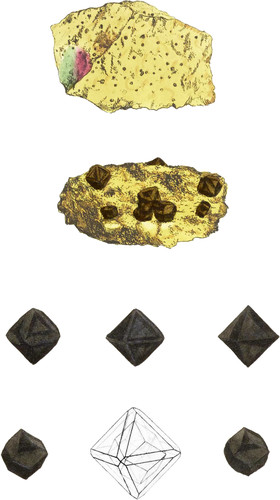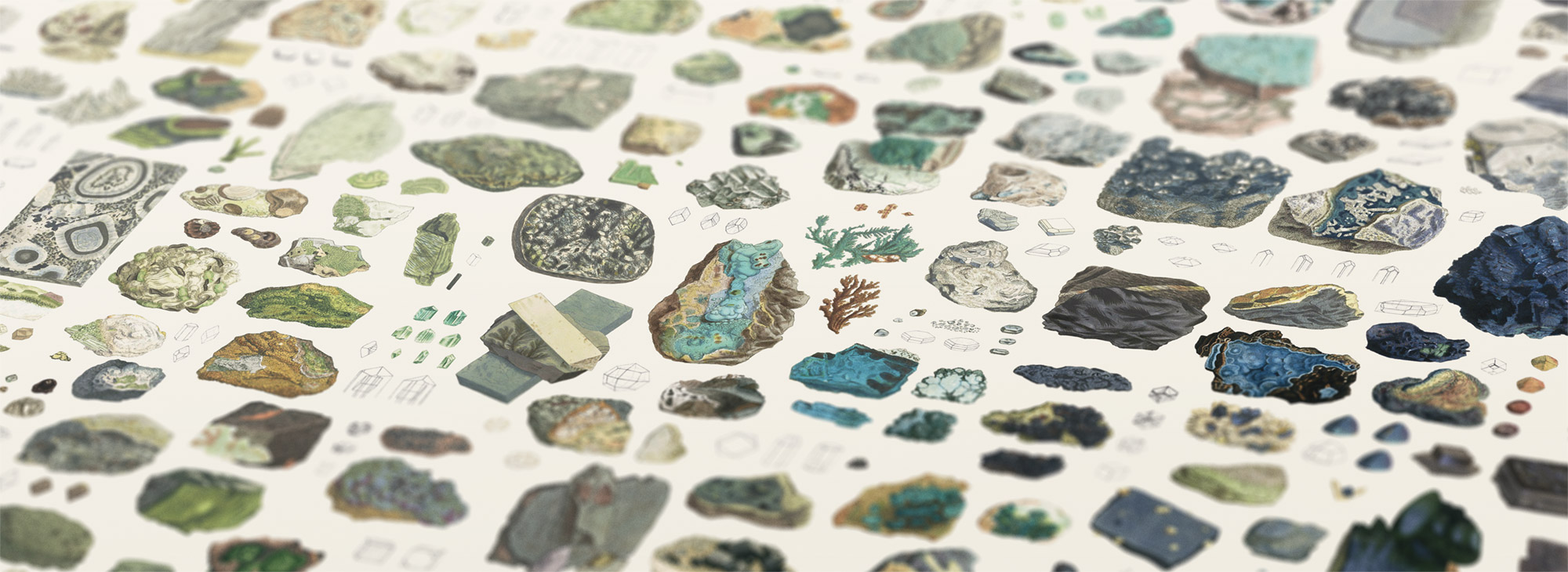 Enlarge
Enlarge
British Mineralogy
Magnetic Iron Ore
- Class 3. Metals.
- Ord. 1. Homogeneous.
- Gen. 6. Iron.
- Spec. 2. Magnetic.
- Div. 1. Crystallized.
- Gen. Char. Iron in combination with but a small portion of oxygen*.
- Syn.
- Iron in a calcined state of mineralized by pure air. Kirw. 2. 157.
- Magnetischer Eisenstein. Emmerl. 2. 278.
- Fer oxydulé. Haüy 4. p. 10.
- Ferrum tesselare. Linn. ed. 12. t. 3. p. 136.
I was much pleased when I discovered this curious crystallization in a pyritaceous copper ore sent me, among other favours, from the neighbourhood of Tavistock, by my kind friend Mr. John Taylor junior.
The crystals are dispersed through the ore in the tolerable abundance; but being small, do not readily distinguish themselves to the unassisted eye: with a lens however, they are very satisfactorily seen, with the variety of modifications here figured, and sometimes, by breaking them, we find them curiously casing each other 2 or 3 times. They are most readily attracted by the magnet, and will support a part of the gangue of pyrites that may chance to be attached to them, of 8 or 10 times their own bulk. The gangue is said to be rich in copper, and is commonly of a bright and pale golden colour, sometimes with a greenish hue, and often iridescent.
I do not know that this crystallized variety of magnetic iron ore has been observed in Great Britain before. Dr. Badham gave me a find octaëdron of the Swedish sort, from Fahlun (where such specimens are not rare), which is above half an inch in diameter: but this is not more strongly attracted by the magnet. It is coated with mica, and, within, is of a more or less deep-brown red, as are ours, sometimes approaching steel-gray and black, partly shining, and metallic. Fracture uneven, somewhat earthy. The crystals are arranged in convenient order, to see the additions that assist in modifying the different crystallizations, (viz.)
The upper figure on the right hand exhibits the regular octaëdron, the faces of which, by the addition of the laminæ of superposition, or superior coating, form long six-died facets, which are those of the dodecaëdron with eight triangular faces parallel to those of the octaëdron, see the middle figure. These are the nearest approach we have seen to the octaëdron in our specimens; with more laminæ, it keeps th esame form which is shown, but with smaller triangular facets in the left hand figure and the right-hand lower figure. In the lower figure on the left hand the laminæ have advanced so far as to form the complete rhomboidal dodecaëdron. The geometrical outline shows this manner of casing over each other; but we must beg our readers to substitute the octaëdron in lieu of the dodecaëdron in the centre, as we find is the case upon further examination since the engraving was finished.
- * 15 to 24 per cent. Kirw. vol. 2. 158.

